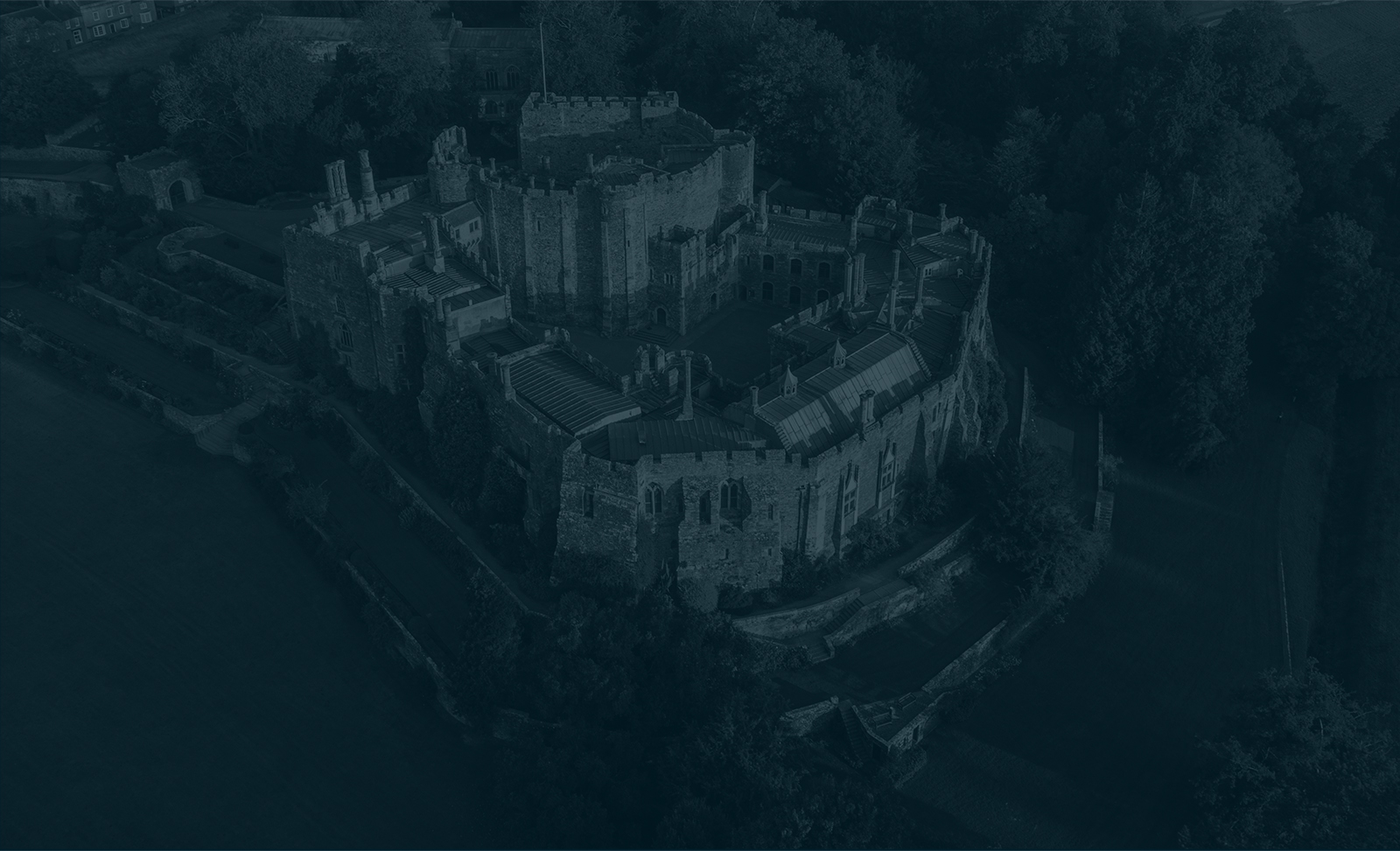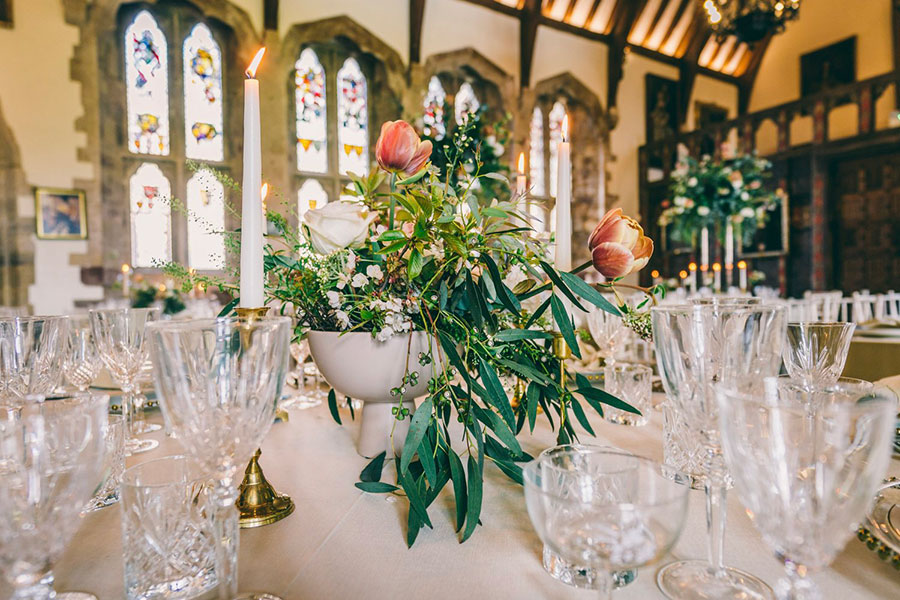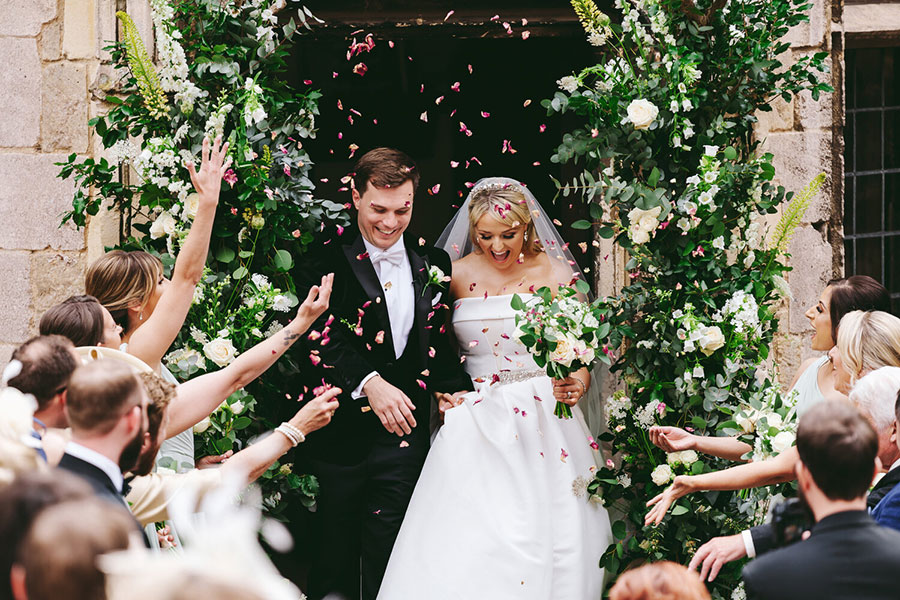In anticipation of the coronation of our new King, Charles III, we take a fascinating look back through the ages to five coronations in history and the role the Berkeley family played in them.
The Coronation of King Henry VII
William Berkeley is the only member of the Berkeley family to take an official role in a coronation. Already a Baron, William was created a Viscount in 1481 and Earl of Nottingham in 1483. On 22nd August 1485, Henry Tudor had beaten King Richard III at the Battle of Bosworth and, only ten weeks later, was crowned at Westminster Abbey becoming King Henry VII. The ceremony which took place on 30th October 1485 was a simple affair as the Wars of the Roses had depleted the treasury. [1] It was decided that William Berkeley would take on the office of Earl Marshal and Great Marshal of England for the day of the coronation as the previous postholder, John Howard, 1st Duke of Norfolk, had died fighting for King Richard III at the Battle of Bosworth. This role was one of the great offices of state in England and was responsible for the king’s horses and stables.
As Earl Marshal, William could expect a prominent position in the celebrations. In the royal procession from the Tower of London to Westminster ahead of the coronation, William rode in front of the King in the procession with two other noblemen. He was situated on the right-hand side carrying the sword of the Marshal of England. On the left was the Lord Great Chamberlain of England carrying his sword and in the centre was a noble holding the King’s sword. On the day of the coronation the Earl Marshal was instructed to be ‘well apparelled’ [2] and accompanied by men carrying ceremonial staffs to line the route for the King’s procession into Westminster Abbey.
William was also part of this procession into the abbey, bearing an unsheathed sword. During the coronation, William would have pledged fealty to Henry alongside his peers uttering the oath that was still being used by the time of Queen Elizabeth II’s coronation in 1953, “I become your liegeman of lief and lymme and of earthelie worship and faith and trowth shall beare unto you to lyve and dye with yow against all maner folke, so god me help”. [3] He was officially invested as Earl Marshal of England a few months later in February 1486.
The Coronations of Queen Mary I, Queen Elizabeth I and King James I
During his lifetime, Henry, 7th Baron Berkeley, was fortunate enough to experience three coronations. When Queen Mary I was crowned on 28th September 1553, Henry was eighteen. He was one of only fifteen men made a Knight of the Bath as part of the coronation celebrations. Knights were created during special royal occasions and were called ‘of the Bath’ because the elaborate ceremony involved taking a bath the day before being invested. The ancient ritual had not changed much since the fourteenth century which involved the King visiting the knight while in his bath, dipping his finger in the water and making a sign of the cross on the would-be knight’s back. As a Queen, it was not thought suitable for Mary to attend to fifteen young men naked in their baths, so she selected her relative, the Earl of Arundel, to knight the chosen men including Henry. [4] Queen Mary’s coronation was the last Catholic coronation to take place in England.
By the time of Queen Elizabeth I’s coronation on 15th January 1559, Henry had become a married man. His wife, Katherine Howard, was a cousin to the Queen through her mother, Anne Boleyn. Henry and Katherine were an ostentatious couple and determined to look their best at the celebrations. Henry had a doublet of crimson satin and silver lace with silver buttons and a white satin doublet made for him. He also had breeches made of crimson velvet lined with crimson satin and another pair of white velvet overlaid with lace and lined with white satin. A new white feather was added to his best cap, and he bought a pair of gilt spurs to wear at the coronation. Katherine had a gown of cloth of gold, shoes of crimson velvet and a petticoat of crimson satin.[5]
Henry and Katherine travelled to London and arrived before the Queen travelled by barge from Whitehall to the Tower of London on 12th January 1559. As Baron and Baroness, it is most likely they would have taken part in the dramatic royal procession from the Tower of London to Westminster two days later as the Queen was ‘most honorably accompanied, as well with gentilmen, Barons, & other the nobilitie of this realme, as also with a notable trayne of goodly and beawtifull ladies’.[6] The procession would have been an amazing spectacle with pageants set out along the route celebrating the Queen. The couple gave a reward of twenty shillings to the Queen’s trumpeters. [7]
Queen Elizabeth’s spectacular coronation was in stark contrast to her successor’s. King James I’s coronation on 25 July 1603 was blighted by an outbreak of the bubonic plague that raged in London and also affected the rest of the country. As such, the traditional coronation procession from the Tower of London to Westminster was cancelled and James forbade people to gather in the streets to celebrate for fear of infection. [8] However, triumphal arches had already been erected along the route and pageants designed, so the procession was deferred to 15th March 1604.
Henry, 7th Baron Berkeley, was nearly seventy by the time of James’ coronation and, keen to show his loyalty, had a design created for a triumphal arch for the procession which survives in the Berkeley Castle archives. The drawing is of two arches supported by three columns; on the left column are inscribed the names of the Sovereigns of England, on the centre column is the name of King James I, and on the right column are the names of the Sovereigns of Scotland. On the four bases supporting the columns are the names of the English and Scottish nobility with a rhyme explaining the meaning of the arch “of England and of Scotland both the kingdomes brave, lyke unto might ye pillars tow resembled here I have”. [9] It is not known whether Henry risked contagion and attended James’ coronation or if the triumphal arch was actually built along the procession route.
The Coronation of King James II
On 23rd March 1685, George 1st Earl of Berkeley received a command to attend the coronation of the new monarch, King James II and Queen Mary of Modena on 23rd April 1685. George Berkeley had been given the Earldom of Berkeley by King Charles II in 1679 so this was the first time he would attend a coronation in the robes of an Earl. The letter stipulated that George be ‘furnished and appointed as to your rank and quality appertaineth’ and that he and his wife were ‘not to fail’ to attend with ‘all excuses sett apart’. [10] George and his wife, Elizabeth wore their robes of estate befitting an Earl and Countess.
For the Earl this was a floor length cloak of crimson velvet trimmed with miniver pure (white fur from the winter coat of the red squirrel). Attached to the cloak was a cape and collar in miniver pure with three rows of ermine (the white winter fur and black tail end of a stoat) to show the wearer’s rank of Earl. Underneath his cloak George wore a long crimson velvet surcoat edged in miniver pure. He also wore a coronet of eight pearls on points interspersed with eight strawberry leaves again to denote the Earl’s status. The cap of the coronet was crimson velvet edged with ermine.
Elizabeth wore the same design of coronet and cloak but hers had a train of a ‘yard and a half’. [11] Underneath she wore a long crimson velvet surcoat edged with miniver pure, with a petticoat of ‘cloth of silver or any other white stuff, either laced or embroidered according to everyones fancy.’ [12]
George and his wife, Elizabeth, participated in the stately coronation procession of King James II and his Queen, Mary of Modena, from Westminster Hall to Westminster Abbey. Elizabeth walked with the other countesses, who numbered twenty-nine in total, in rows of four, holding their coronets in their hands. George walked behind the countesses with thirty-two other Earls in the same formation.
Following the crowning of King James II at Westminster Abbey, George, 1st Earl of Berkeley, along with the rest of the peerage, did homage to their king by ‘taking off their coronets, touched the crown on the king’s head, promising by that ceremony to support it with all their power; and, kissing the king’s left cheek, were, of His Majesties abundant grace, severally kissed by him at the same time.’ [13]
The coronation encountered a number of ominous mishaps, such as the King’s crown being too large and in danger of falling off his head and the royal standard being blown off the White Tower at the Tower of London when the gun salute announced the King and Queen’s entry into the abbey. [14] Indeed, after a reign of over three years, James was forced to flee the country and his son-in-law and daughter, William and Mary, took the throne. It is likely George donned his coronation robes once again for their coronation in 1689.
- Hilliam, D. Crown, Orb and Sceptre: True Stories of English Coronations (Stroud, 2009) p. 88
- Wickham Legg, L. D. English Coronation Records (Westminster, 1901) p. 226
- Wickham Legg, L. D. English Coronation Records (Westminster, 1901) p. 234
- Younghusband, G. J. The Tower from Within (London, 1919) p. 118
- Smyth, J. The Berkeley manuscripts. The lives of the Berkeleys, lords of the honour, castle and manor of Berkeley, in the county of Gloucester, from 1066 to 1618 Vol. II, p. 284
- Anonymous, The Queen’s Majesty’s Passage (1559)
- Berkeley Castle Muniments Room
- Hilliam, D. Crown, Orb and Sceptre: True Stories of English Coronations (Stroud, 2009) p. 118
- Berkeley Castle Muniments Room
- Berkeley Castle Muniments Room
- Sandford, F. The History of the Coronation of James II (1687) p.33
- Sandford, F. The History of the Coronation of James II (1687) p.33
- Sandford, F. The History of the Coronation of James II (1687) p.97
- Hilliam, D. Crown, Orb and Sceptre: True Stories of English Coronations (Stroud, 2009) p. 141
Written on
Tuesday 2nd May 2023
Category



